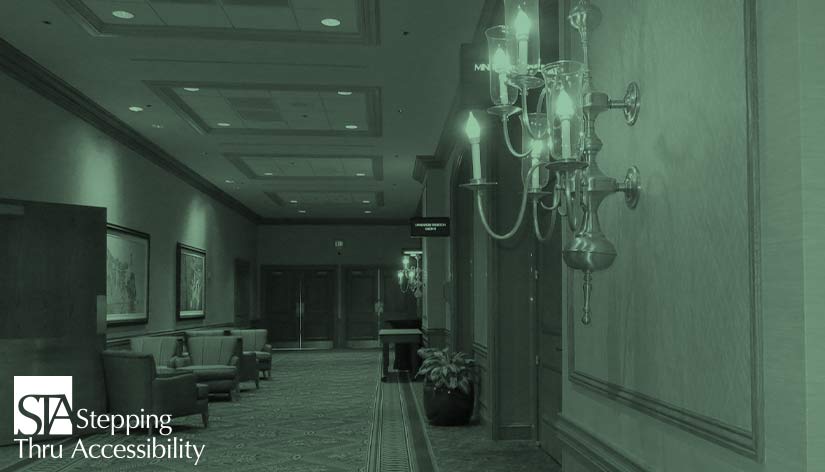Blog
Return to Blog »
Janis Kent, FAIA, Architect, CASp © February, 2021 I received an email today from someone at an Administrative Authority enquiring as to my opinion on protruding objects. Apparently they are reviewing a new construction project where the wall sconces are installed at less than 80″ above the finished floor, which is fine, but they project into the hallway more than 4″ which is not fine. While it was just a small amount of ⅛” to ¼” depending on which sconce they measured, there was concern. So their question was about construction tolerances and whether this was applicable. Now my understanding is that we do not apply standard construction tolerances within our drawings for new construction. Architects should include, as part of their drawings, an installation range with an upper and lower limit as opposed to using an exact dimension or minimum/maximum on their dimensioning. This tolerance range should fall within what is required by ADA. But this rarely happens. Contractors should also know that if a drawing has a maximum or a minimum dimension, they should not try and build exactly to that limit. If these two suggestions were to happen, we would all be in a better place to making construction compliant and with many less headaches. But, back to the sconce issue, we are talking about manufacturing tolerances, or even dry wall installation tolerances, and perhaps concrete waviness tolerance on the floor, although probably not on the latter. But if all of the sconces project more than 4″, then tolerances are really not the issue and do not justify the protrusion no matter how small a dimension, even if this was existing construction. Back to the emails. We also briefly discussed whether you measure the projection from the face of the wall versus from the face of the baseboard. If you have a very short 2″ high base with a very narrow profile, would this be enough to act as a cane detectable barrier for someone who is blind or visually impaired? If the base were, let’s say, 10″ in height and had a thickness of ½” would that work? But I remembered another new construction project I had worked on a half dozen years ago with just the same issue. I was going back and forth with the architect and with the contractor because I stated it was not compliant. And we did go back and forth for quite some time. And on some of these projects you can have hundreds of these installed, so it is not a small issue. On one of my site visits, a facility person, who had more hands-on experience, was walking the site with me instead (contractor and architect were probably tired of my observations). I pointed out what the issue was on the sconce. He spent a few minutes looking at it, from below, above, and the sides, and then disappeared for a bit. When he came back he had a mallet, and then hammered it in place so it was flush – he said it was just not set tight enough. I mentioned this to the person who sent me the initial email and said that perhaps it is the same issue with their project – certainly an easy fix….and gets rid of a lot of aggression even if it does not solve the issue. About 2 hours later I got the following response – “Would you believe (of course you would), they tried it and it worked! The tried and tested hammer method resolved the issue:-) Thanks so much again!” So the moral of the story is, perhaps we just need to go back to some brute strength hands-on methods to get objects to do what they are designed to do. This would avoid trying to figure out other more complex methods of resolution, and avoiding manipulation of codes/regulations to provide the solution you want. Just a thought. Nothing in this article constitutes legal or design advice for a particular project or circumstance. Be aware that your local City or County may have additional requirements that are different or more restrictive than the State or Federal requirements. Also, this article is an interpretation and opinion of the writer which may vary for a particular project or due to other circumstances. It is meant as a general summary – current original regulations should always be reviewed when making any decisions and specific advice by a qualified professional should be secured for a particular project or circumstance. © Janis Kent, FAIA, Architect, CASp 2021 Thanks to C. Barnett for the topic inspiration. If you have a topic you’d like to request, please email me.Protruding Objects – on a lighter note
